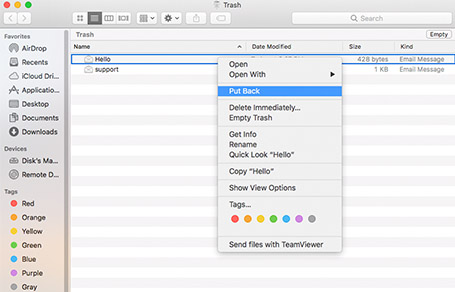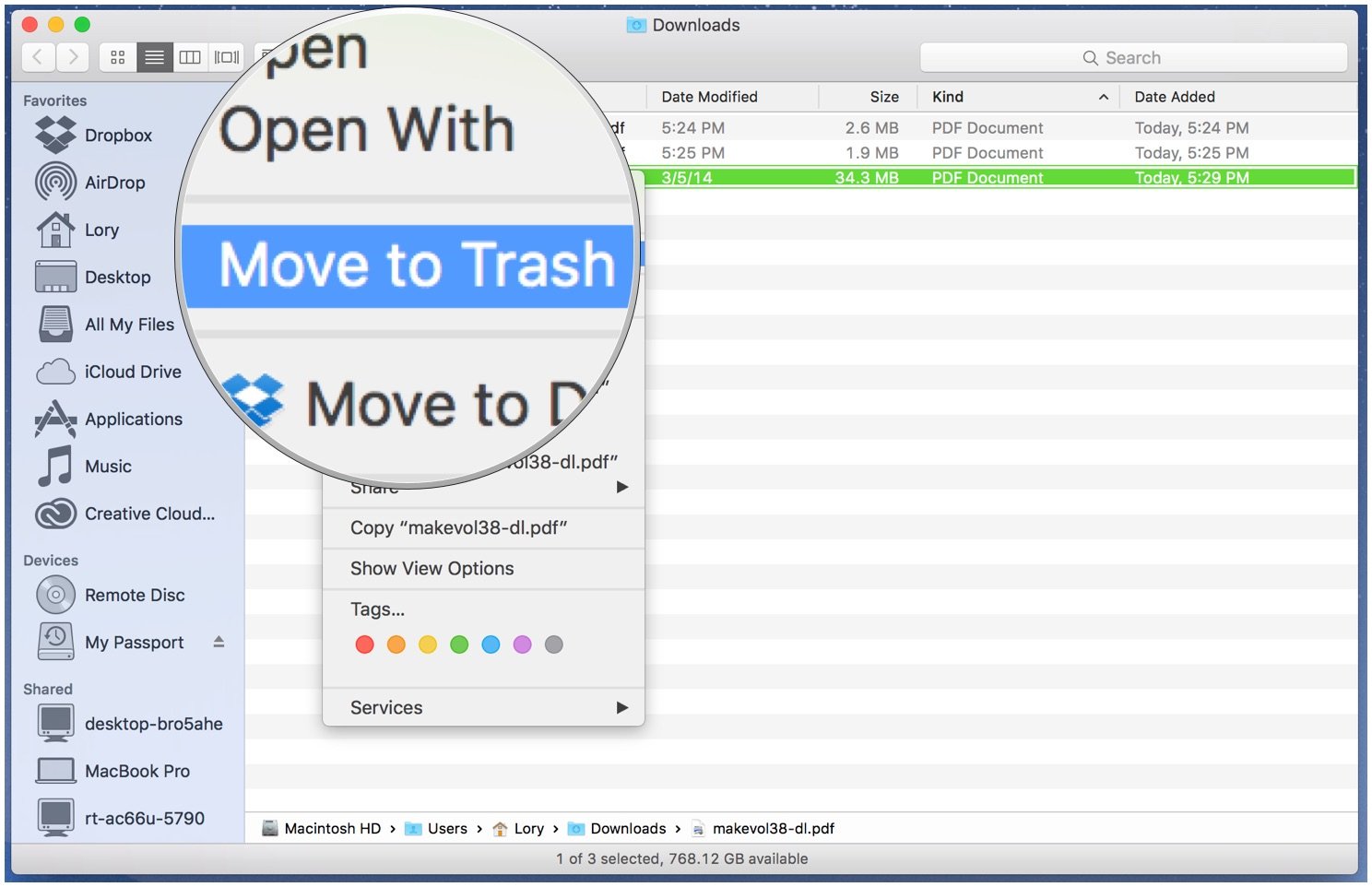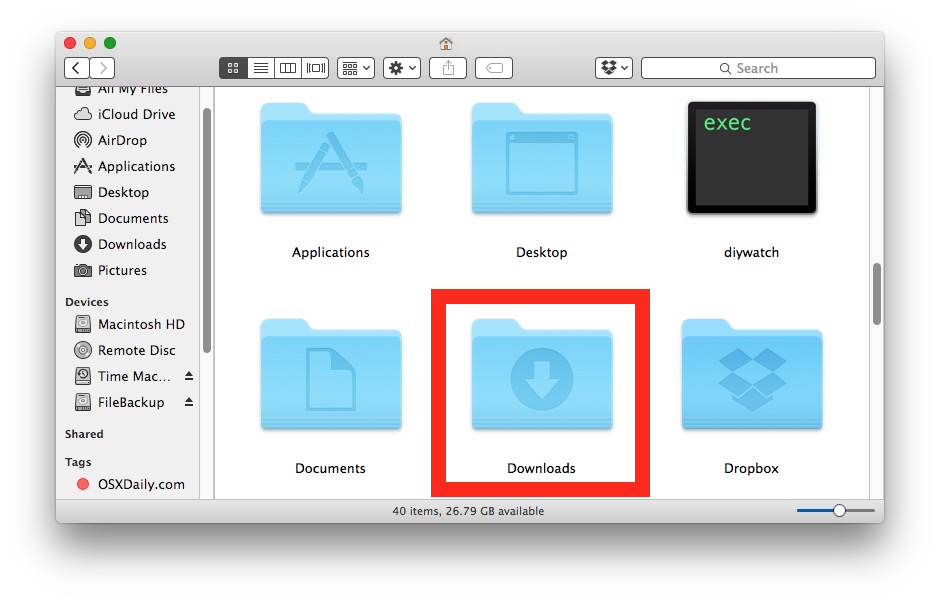- Can I Empty My Downloads Folder Mac
- Accidentally Deleted Downloads Folder Mac
- Should I Empty Download Folder
- How to delete downloaded files. The Downloads folder can easily get cluttered with large files. In particular, the numerous DMG files that are left after an app is installed can, over time, take up a huge amount of available storage space. Let’s review two methods to remove unneeded downloads: Open Finder and go to Downloads; Look through the.
- The problem is most apps create additional files and folders outside of the Applications folder. These remain on your Mac even after the app itself is deleted. Such files and folders are called leftovers, and while they may not seem like a big deal in small amounts, they can build up over time. That can eventually slow down your Mac.
- Look into the backup for the deleted Downloads folder using the TimeLine or Up/Down arrow. Select the folder and click Restore. In the absence of Time Machine backup, go through the following data recovery method. Recover Deleted Downloads Folder Using Mac File Recovery Software.
Step 1 Select a Location for Deleted Files. Launch Recoverit Data Recovery Software.To restore deleted files and folders on Mac, you need to select a location or hard disk where your data were deleted or lost. Step 2 Scan the Partition or Disk. The deleted files recovery tool will start scanning the selected partition or hard drive to search for your deleted files and folders on Mac. Trying to free up HD space. I have lots of files in my download folder. I am afraid to delete files. For instance the two largest are VMware (215MB) and Itunes11.0 (206 Mb). I run both iTuens and VM but do I need to keep the downloaded fiels in the download folder? Can I delete them? I'm running VM and iTunes?
Moving files in Mac OS X is not as simple as it was in Mac OS 9 days (prior to 2004, not to be confused with the 2013 released Mac OS X 10.9), and is different from Windows as well.
Before deleting or moving any files you are uncertain of, be sure to make at least two backups of your critical data.
Files with a period as a prefix (i.e. .profile, and .DS_Store), should not be renamed or moved. These are files that are otherwise invisible in Mac OS X and help Mac OS X manage the system itself.
Don't delete or move mach files that appear when you double click the hard disk icon.
:max_bytes(150000):strip_icc()/006-delete-downloads-on-mac-4692292-c4908d15b2df4f9bb1021bdfa496e335.jpg)
User folders must have their name maintained if you expect to be able to use X again. So if you first setup your Mac OS X account on setup as JSmith, don't rename or move the JSmith folder from the Users folder. We'll assume your user folder here on in your Users folder is your JSmith folder for example purposes only.
Unix defines directories and subdirectories by /es. So when I say /Users/JSmith/Documents/, that means you double click hard drive, double click Users, Double click JSmith, and double click Documents folder to get there from Mac OS 9. In Mac OS X View by columns allows you to navigate folders by single clicking on them, but they maintain the same hierarchy.
Don't delete or move files within System and Library folders appearing when you first double click your hard disk. Don't delete or move .App files in your Applications folder, these are Mac OS X native applications.
Don't delete or move files in your /Users/JSmith/Documents or /Users/JSmith/Library folder. Be aware that by default Mac OS X may set itself to put your iTunes music in /Users/JSmith/Music though that can be changed in the preferences, and iPhoto in /Users/JSmith/Pictures/

You can freely move the contents of these files and folders about, though not necessarily their subfolders (unless you created the folder):
/Applications Mac OS 9 - though I would test to make sure the application works after moving it. If it doesn't then move it back.

/Documents
/Users/JSmith/Library/Favorites/
/Users/JSmith/Movies
/Users/JSmith/Sites
/Users/JSmith/ (except its default subfolders)
Can I Empty My Downloads Folder Mac
Observing all these rules will prevent headaches in the future.
Additionally, you can safely delete Log files, but not the folders that own them. There is a nightly script that runs to delete them in Mac OS X as

long as you are in screen saver, but not always in Energy Saver, or they are deleted right after the machine wakes from sleep. The latter function could
explain the lag to wake from sleep. Those log files can be deleted if you are running low on space. But they could make it hard to troubleshoot issues that happened when they were last modified.
Accidentally Deleted Downloads Folder Mac
System Cache files should not be deleted unless your system is backed up, as they could impact the ability of programs to launch.
If you find you must access any of the Mac OS X only folders while in 9 or running an application in Classic, return to X, and quit Classic and repair permissions (links to Apple knowledgebase explaining how to repair permissions)
Note for Windows users: Mac OS X has two file locations that are nothing more than shortcuts. The translucent bar, known as the Dock, and the left Finder Window sidebar. That means do not assume when you drag to either location that a file is safely residing in some other folder, than the source folder you just dragged from. Unlike Windows, it is not! Also installer packages create virtual disks that dismount when you reboot. Those virtual disks contain folders that you sometimes have to drag to the hard drive Applications folder for them to be usable always. Otherwise you have to remount the image to get access to the application. Dragging the application from the image to the shortcut bar, or the Dock will NOT install it. Well packaged applications include their own installer proram to avoid this problem. If you drag to the Dock, expect it only to represent a shortcut to wherever you dragged it from. It is not safe deleting it from the source location if you want access to it again!